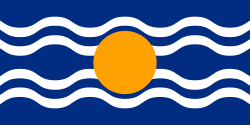West Indies federal elections, 1958

|
|
|
|
|
|
On March 25, 1958, the first and only elections were held for the House of Representatives of the West Indies Federation, which had been established on January 3 of that year.
In preparation for the elections, two Federation-wide parties were organised as confederations of local political parties. Both were organised by Jamaican politicians: the West Indies Federal Labour Party by Norman Manley, and the Democratic Labour Party by Alexander Bustamante. In broad terms, the WIFLP consisted of the urban-based parties throughout the Federation, while the DLP consisted of the rural-based parties. A small third party, the Federal Democratic Party, was founded in November 1957 by a group of Trinidadians, although it did not win any seats.
The platforms for the two major national parties were similar in many respects. Both advocated maintaining and strengthening ties with the United Kingdom, United States, and Canada (countries with which the islands had strong cultural and economic links); encouraging and expanding tourism; working to bring British Guiana and British Honduras into the Federation and to obtain loans, financial aid, and technical assistance. Despite these similarities, there were differences. The WIFLP had advocated the encouragement of agriculture while the DLP had promised a climate favourable to both private industry and labour, development of human and economic resources. The WIFLP promised to encourage the Bahamas (in addition to British Guiana and British Honduras) to join the Federation, whereas the DLP did not. The WIFLP also campaigned to establish a central bank for the extension of credit resources and advocated a democratic socialist society and full internal self-government for all the unit territories, whilst avoiding the issues of freedom of movement and a customs union. The DLP said nothing about full internal self-government, attacked socialism, wished to avoid high taxation (via loans and technical aid) and emphasized West Indian unity, freedom of worship and speech, and encouragement of trade unions.
Candidates were nominated on February 28 in all islands save Trinidad and Tobago, where candidates were nominated March 3. The WIFLP won the election, winning 25 seats (with one additional member siding with it) while the DLP carried 19 seats. The bulk of the WIFLP seats came from the smaller islands while the DLP carried the majority in Jamaica and Trinidad and Tobago. WIFLP leader Sir Grantley Adams of Barbados became prime minister. The selection of Adams as prime minister was close, as the Grenada members, while allied with WIFLP, supported the DLP, resulting in Adams being elected 23–21.
The selection of Adams as the prime minister was indicative of the problems the Federation would face. The expected leader of the WIFLP was Norman Manley, Premier of Jamaica, and the next logical choice was Dr. Eric Williams, Premier of Trinidad and Tobago. However, neither had contested the federal elections, preferring to remain in control of their respective island power bases. This suggested that the leaders of the two most important provinces did not see the federation as viable. Similarly, Alexander Bustamante, the Jamaican founder of the DLP, also declined to contest the federal election, leaving the party leadership to the Trinidadian Ashford Sinanan. The absence of the leading Jamaican politicians from any role at the federal level was to undermine the federation's unity.
Election results
References